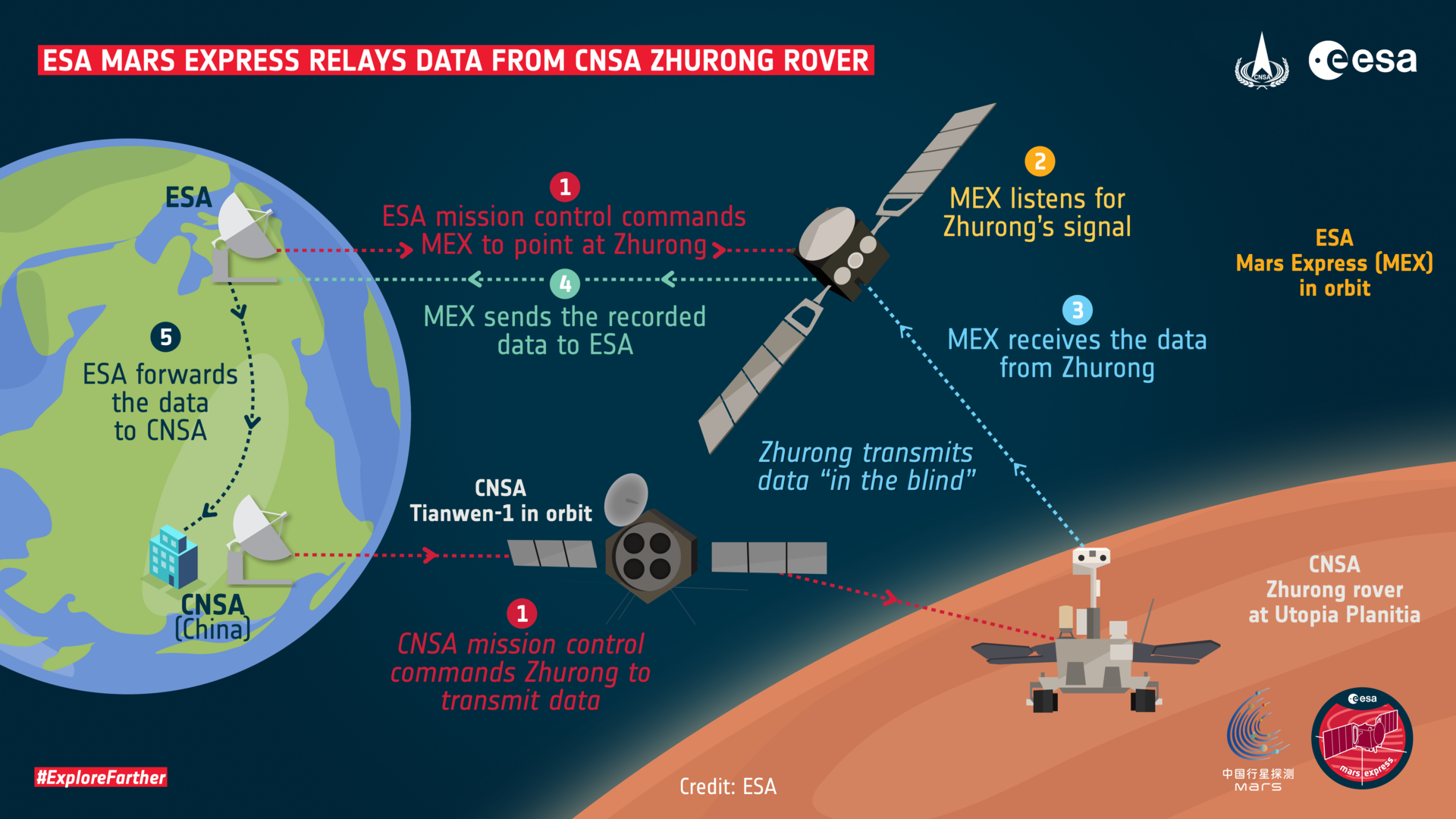
ESA Mars Express relays data from CNSA Zhurong rover
Landers and rovers on Mars gather data that help scientists answer fundamental questions about the geology, atmosphere, surface environment, history of water and potential for life on the Red Planet.
To get these insights to Earth, they first transmit the data up to spacecraft in orbit around Mars. These orbiters then use their much larger, more powerful transmitters to ‘relay’ the data across space to Earth.
“Normally, an orbiter like ESA’s Mars Express first sends down a hail signal to a rover as a ‘hello’,” says James Godfrey, Mars Express Spacecraft Operations Manager.
“The rover then sends back a response to establish stable communications and begin the two-way exchange of information. But this relies on the rover’s radio system being compatible with the orbiter’s.”
As Mars Express transmits its ‘hello’ signal using communication frequencies that are different from those the Chinese Zhurong Mars rover receives, two-way communication is not possible.
But in the other direction, Zhurong can transmit a signal using a frequency that Mars Express can receive.
The relay radio on Mars Express has a mode that allows this one-way communication – communication ‘in the blind’ where the sender can’t be sure if their signal is being received – but until now, the technique hadn’t been tested on the spacecraft.







